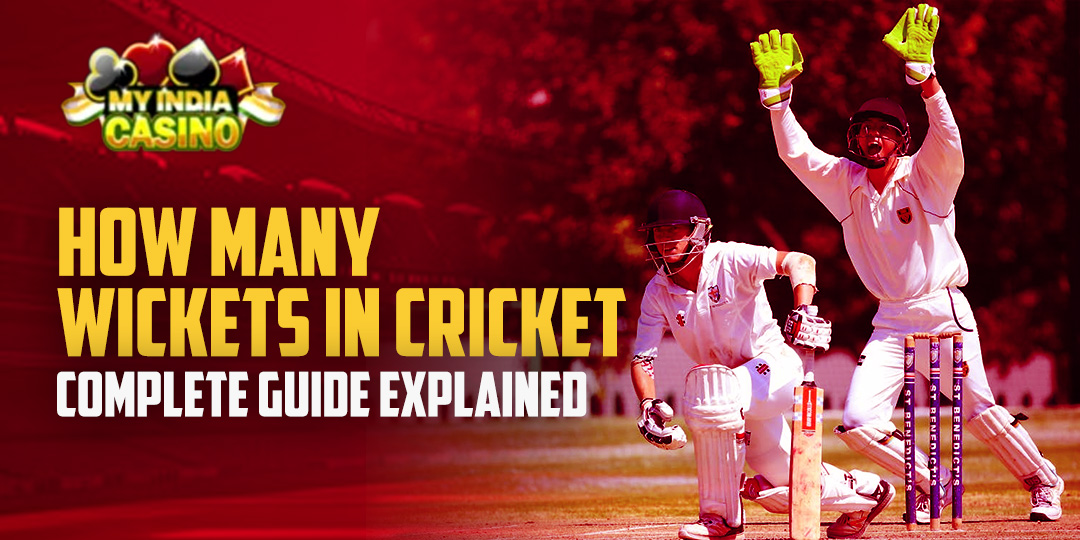
How Many Wickets in Cricket: Complete Guide Explained
Published on November 25, 2025
Cricket can feel confusing at first. Especially when you’re trying to understand how many wickets in cricket decide how long a team can bat. Moreover, wickets shape almost everything in the sport. Every dismissal changes the pace of a match. However, many new fans still mix up the meaning of a wicket. By 2025, cricket has become even faster and more unpredictable, which makes wickets more valuable than before. Also, tournaments like the IPL, BBL, and international fixtures rely heavily on wicket strategy to tilt momentum.
What a Wicket Really Means
People often assume wickets only mean “someone got out,” but the concept is actually broader. A wicket refers to both the stumps and the dismissal. Meanwhile, fans asking how many wickets in cricket matter usually want to know how dismissals work. Batters can be out in different ways—bowled, caught, stumped, LBW, run out, hit wicket, or rarely by handling the ball. Additionally, the bowling team tries to use every chance to break partnerships. One wicket sometimes turns the match around instantly.
How Many Wickets a Team Gets Per Innings
Every team gets 10 wickets in an innings. That never changed even with all the new formats popping up around the world. This rule answers the repeated question, how many wickets in cricket are allowed for a batting side. Since 11 players exist in a team, the innings stops once only one batter is left without a partner. Moreover, this applies to every official format—Test, ODI, and T20. Even with new rules in 2025 tournaments, the wicket structure stays the same.
Wickets Across Formats in 2025
Different formats use wickets differently. In Test cricket, losing wickets slowly matters a lot. Therefore, teams tend to play carefully for long periods. In ODIs, sides mix caution and attacking shots while saving wickets for the last 10 overs. Meanwhile, in T20 cricket, wickets fall more often because batters attack from ball one. Also, every franchise league in 2025—from the IPL to SA20—still follows the same 10-wicket rule. This keeps the question how many wickets in cricket relevant across every level.
Table: How Many Wickets in Cricket
Format | Total Wickets per Innings | Notes (2025 Update) |
Test Cricket | 10 wickets | Can go up to four innings |
One-Day International (ODI) | 10 wickets | 50 overs fixed |
T20 International (T20I) | 10 wickets | 20 overs fixed |
The Hundred / Short Leagues | 10 wickets | Balls used instead of overs |
This table helps explain how many wickets in cricket apply across formats in the simplest way possible.
What Happens When All Wickets Fall?
Once ten wickets fall, the innings ends. It’s as simple as that, although many new fans still ask about it. Moreover, when a team becomes “all out,” they must stop batting right away, even if overs are left. This applies globally in 2025—including ICC matches and every domestic cricket league. Additionally, teams losing too many early wickets usually struggle to reach a strong total. Therefore, wicket management is a big part of modern game strategy.
Wickets and Match Strategy
Strategy changes a lot because of wickets. Batters try hard not to lose them early. Meanwhile, bowlers stay hungry for quick breakthroughs. Knowing how many wickets in cricket are available helps teams plan powerplays, middle overs, and death overs. Also, in T20s, teams sometimes don’t mind losing wickets if they can score fast. However, in ODIs, saving wickets for the final overs has become a major trend by 2025. Furthermore, in Test matches, teams survive long spells using defensive batting tactics to protect wickets.
Wicket Milestones and Bowling Success (2020–2025)
Between 2020 and 2025, several bowlers made big breakthroughs in international cricket. Jasprit Bumrah, Mitchell Starc, Nathan Lyon, and Shaheen Afridi added huge wicket counts to their career totals. Additionally, young talents in franchise leagues shocked fans with their sudden rise. Moreover, bowlers who consistently take three or four wickets per match become match-winners. This is why understanding how many wickets in cricket matter helps appreciate modern bowling achievements.
Rare Moments: Hat-Tricks and Six-Ball Magic
Cricket has some unbelievable moments. A hat-trick—three wickets in three balls—still excites fans every time. Meanwhile, people also ask if six wickets in an over are possible. Technically yes, although it’s extremely rare. If it happens, it’s simply known as six wickets in six balls. Additionally, 2025 cricket analytics show that bowlers use variations like cutters, slower deliveries, and yorkers more often to take multiple wickets quickly. Moreover, with higher risk batting, wickets fall faster than before.
Get more info here: Next Cricket World Cup Schedule and Full Details Explained
Why Wickets Still Matter Most in 2025
Cricket in 2025 relies heavily on analytics and match-up data. Therefore, wickets have become even more valuable in shaping momentum. Also, broadcasters and teams track wicket patterns more closely. Meanwhile, in formats like T20, losing wickets early can destroy a team’s run rate. Understanding how many wickets in cricket shape innings helps fans enjoy the game more deeply. Furthermore, wickets remain the biggest turning points, whether in Tests or fast-paced franchise tournaments.
FAQs Section
Q1. How many wickets can you get in cricket?
A team can lose 10 wickets in an innings. After that, the batting ends.
Q2. How many wickets until all out?
A team becomes all out once 10 wickets fall and no partner remains.
Q3. How many wickets are out in cricket?
There are 10 possible outs before the innings closes.
Q4. What are 6 wickets in an over called?
It’s simply called six wickets in six balls. A very rare feat.
